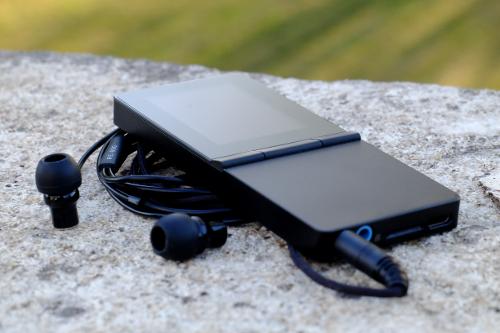Here's my Super-mini review,They told me two different places to put it,so I put the review here.




I wanna thank Hifiman for letting me review the Hifiman Super Mini. Its small and the included earphones are a nice length. They do not get in the way when I doing my workout, or any thing that I do.
The screen is very clear which is a good time when you want to look at the text on the screen, To go thru the menu for different options. Being small means I can put it inside my pocket while exercising or coat pocket if I'm going for a walk. It came with a screen project sheet but I couldn’t get it on without having air bubbles under it, so I left it off.
Updating the firmware is a breeze. I didn't expect it to be that simple, as I have other products that make you go thru the hoops just to update the firmware.
The location of the buttons are in good spots, When I reach for a button, I know which one I am pressing, instead of fumbling around and hitting the wrong button. I don’t know how long it takes to recharge from my computer, but it seen fast enough to me.
They give you many options to search for your music besides using the File explorer, if you have a lot of music on your sd card. You can search by artist, albums, and genre. If you marked songs as your favorites you can also list just those, or all songs. In the system settings you have repeat which will repeat which every song is playing and then shuffle which randomly picks songs from your library. There are also options to change the back-light and setting the timer for the super-mini to go to sleep, which has settings for off,5mins, 10min,30min and an hour.
There are settings for screen-lock, language, updating database, reset settings and last format Sd card.
I been listening to a couple of songs with the included headphones that are balanced. I enjoy the sound signature so far, the bass is really nice and punchy which I like very much, but there are some dub-step songs that the earphones cant handle and end up causing static such as those very heavy sub sounds. But it could be the song that was playing, as other songs with similar bass doesn’t do it. There was no brightness any where, the highs was smooth, drums comes thru nicely,in other songs that had an piano or two you could hear them really well. To me nothing overlapped each other and every type of instrument could be heard while the song was playing.
I tried using my Nuforce HEM2 with the Super-mini and they work very well with it, inside the normal jack. While it did sound good, it didn’t sound as good as the earphones that came with the mini but then again those was plugged into the balanced jack. I don’t have a balance cable for my HD700 so I didn’t try it with it. I did try the normal jack but I did not like it with the mini but I bet it would had done better with balanced. Plus I don’t picture my self walking around the apt or to the mail boxes with my HD700 on. Like I would with the included headphones and mini.
I only had a 2GB microSD card to work with so I stuck with 320KBs MP3’s, I would have tried. flacs but not enough room to try enough of them.































